Everything you need to know about industrial tunnel microwave fish feed pet dog food sterilizing dryer in 2024
Introduction
In the ever-evolving landscape of food processing technology, industrial tunnel microwave fish feed pet dog food sterilizing dryer emerges as a cornerstone solution for ensuring the safety and quality of pet food products. With the increasing demand for nutritious and safe pet food options, manufacturers are turning to advanced sterilization methods to meet stringent standards and consumer expectations. This comprehensive guide aims to shed light on the intricate workings of industrial tunnel microwave fish feed pet dog food sterilizing dryer, its applications, benefits, and the latest advancements shaping the industry in 2024.
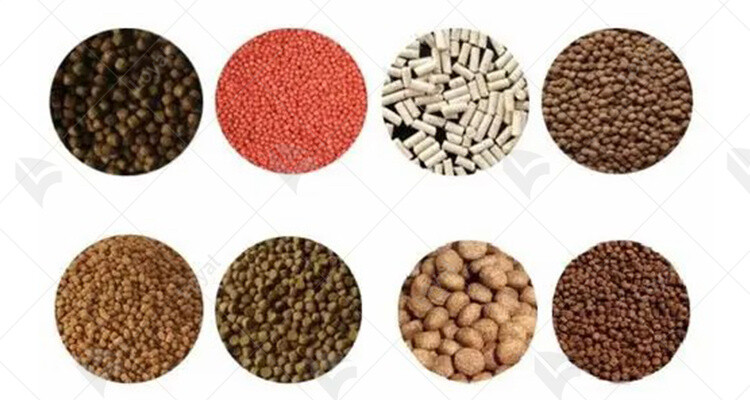
Working Principle
The industrial tunnel microwave fish feed pet dog food sterilizing dryer operates on a sophisticated principle that integrates microwave technology with drying and sterilization processes. At its core, this equipment utilizes microwave radiation to generate heat within the interior of the dryer.
Microwaves, electromagnetic waves with frequencies ranging from 300 MHz to 300 GHz, are emitted by a magnetron within the system. These microwaves penetrate the fish feed, pet dog food, or other food products placed inside the dryer, causing polar molecules within the food to rotate and generate heat through friction.
The tunnel design of the dryer ensures that the microwaves uniformly distribute throughout the chamber, facilitating even heating and sterilization of the food products. This is crucial for achieving consistent quality and safety standards in the final product.
Furthermore, the sterilization process is facilitated by the high temperatures reached within the dryer, effectively eliminating harmful pathogens and microorganisms that may be present in the fish feed or pet dog food. This ensures that the end product meets strict hygiene regulations and is safe for consumption by pets.
In summary, the working principle of the industrial tunnel microwave fish feed pet dog food sterilizing dryer revolves around the efficient utilization of microwave radiation to generate heat and facilitate both drying and sterilization processes. This innovative technology ensures the production of high-quality, safe food products for pets while maximizing efficiency and productivity in industrial food processing operations.
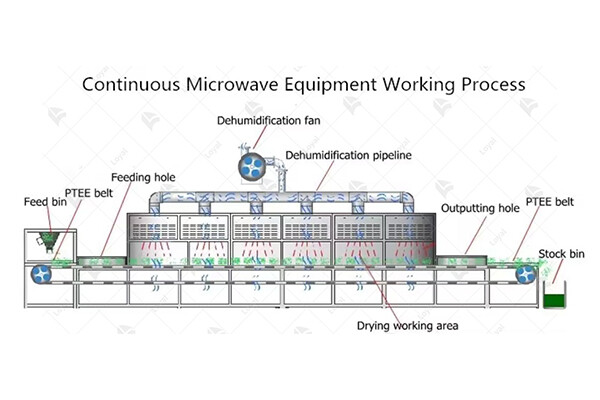
Advantages of microwave drying and sterilization equipment
Advantages of Microwave Drying and Sterilization Equipment |
1. Rapid Processing Time: Microwave drying and sterilization equipment offer significantly faster processing times compared to traditional methods. This results in increased productivity and efficiency in food production processes. |
2. Uniform Heating: The uniform distribution of microwave energy ensures even heating throughout the product, eliminating hot spots and ensuring consistent quality and safety of the final product. |
3. Preservation of Nutrients: Unlike conventional drying methods that may lead to nutrient loss due to prolonged exposure to heat, microwave drying and sterilization equipment help preserve the nutritional value of food products by minimizing heat exposure. |
4. Enhanced Food Safety: Microwave technology effectively kills bacteria, viruses, and other pathogens, thereby ensuring the safety and hygiene of food products. This reduces the risk of foodborne illnesses and improves consumer confidence in the product. |
5. Energy Efficiency: Microwave drying and sterilization equipment are known for their energy efficiency, as they require less energy compared to traditional heating methods, leading to cost savings and environmental benefits. |
6. Versatility: These machines can handle a wide range of food products, including fish feed, pet food, and dog food, offering versatility in food processing operations. |
7. Space-saving Design: Industrial tunnel microwave equipment often features compact designs, allowing for efficient utilization of space in food processing facilities. This is especially beneficial for facilities with limited space availability. |
8. Reduced Labor Costs: With automated operation and minimal manual intervention required, microwave drying and sterilization equipment help reduce labor costs and streamline production processes. |
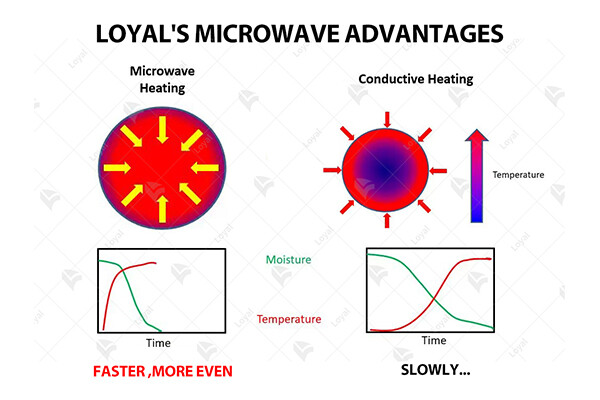
Technical parameters
| Technical Parameters Of Continuous Microwave Dryer Industrial Microwave Drying Machine | |||||
| Model | Size LWH(Can be customized according to the customer's requirements) | Output power | Dewaterability | Sterilization capacity | Baking and Roasting capacity (Depends on different raw material) |
| LY-10KW | 5000mm825mm1750mm | ≥10KW | 10KG/Hour | 100KG/Hour | 30-50KG/Hour |
| LY-20KW | 8000mm825mm1750mm | ≥20KW | 20KG/Hour | 200KG/Hour | 60-100KG/Hour |
| LY-30KW | 8500mm1160mm1750mm | ≥30KW | 30KG/Hour | 300KG/Hour | 90-150 KG/Hour |
| LY-40KW | 10000mm1160mm1750mm | ≥40KW | 40KG/Hour | 40KG/Hour | 120-200KG/Hour |
| LY-50KW | 12500mm1160mm1750mm | ≥50KW | 50KG/Hour | 500KG/Hour | 150-250KG/Hour |
| LY-60KW | 13500mm1450mm1750mm | ≥60KW | 60KG/Hour | 600KG/Hour | 180-300KG/Hour |
| LY-70KW | 13500mm1500mm1750mm | ≥70KW | 70KG/Hour | 700KG/Hour | 210-350KG/Hour |
| LY-80KW | 13500mm1650mm1750mm | ≥80KW | 80KG/Hour | 800KG/Hour | 240-400KG/Hour |
| LY-100KW | 16800mm1650mm1750mm | ≥100KW | 100KG/Hour | 1000KG/Hour | 300-500KG/Hour |
| LY-150KW | 22400mm1850mm1750mm | ≥150KW | 150KG/Hour | 1500KG/Hour | 450-750KG/Hour |
| LY-200KW | 27000mm1850mm1750mm | ≥250KW | 250KG/Hour | 2500KG/Hour | 750-1250/Hour |
| LY-300KW | 32000mm1850mm1750mm | ≥300KW | 300KG/Hour | 3000KG/Hour | 900-1500KG/Hour |
| Power Supply | 380V±10% 50Hz±1% Three-Phase Five-Wire | ||||
| Microwave Output Frequency | 2450±50Mhz | ||||
| Microwave Input Apparent Power | ≤168Kva | ||||
| Microwave Output Power | ≥120Kw | ||||
| Microwave Power Adjustment Range | 0-30Kw(Adjustable) | ||||
| Ambient Temperature | -5-40°C | ||||
| Relative Humidity | ≤80%, Surrounding Environment:No Corrosive Gas, Conductive Dust And Explosive Gas | ||||
| Transmission Speed | 0-10m/Min(Adjustable) | ||||

Key components of microwave drying and sterilization equipment
Component | Description |
Magnetron | The magnetron is the heart of the microwave system, generating microwave energy for heating. |
Waveguide | It guides the microwaves from the magnetron to the processing chamber. |
Processing Chamber | This is where the food items are placed for drying and sterilization. |
Conveyor System | Transports the food items through the processing chamber, ensuring uniform exposure. |
Temperature Sensors | Monitors and controls the temperature within the processing chamber for optimal results. |
Control Panel | Allows operators to set parameters such as time, temperature, and power level. |
Exhaust System | Removes excess moisture and heat from the processing chamber to maintain efficiency. |
Safety Interlocks | Prevents access to the processing chamber when the system is in operation for safety. |
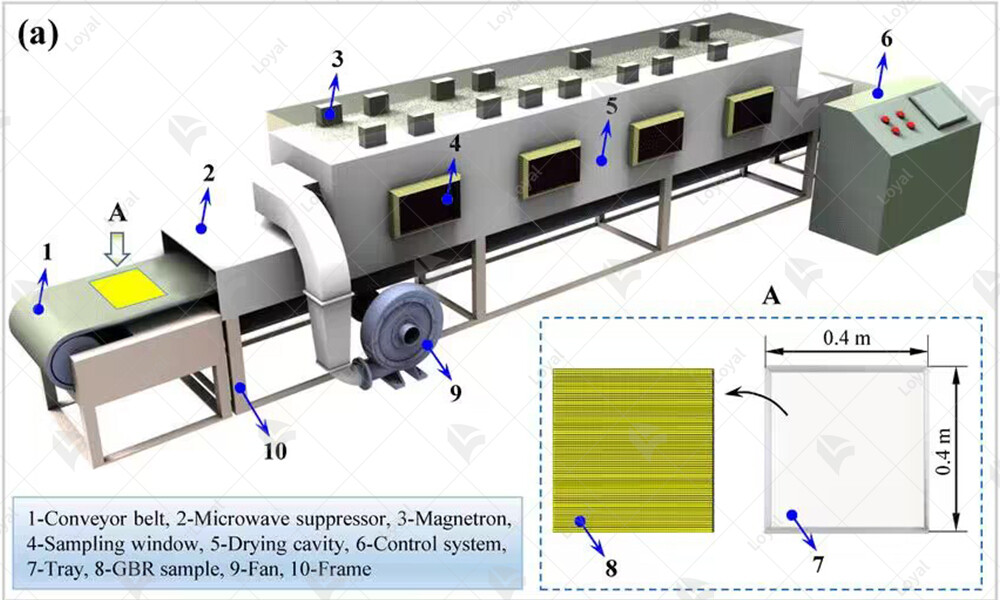
Comparison and advantages of microwave technology and traditional sterilization methods
Aspect | Microwave Technology | Traditional Sterilization Methods |
Sterilization Efficiency | High efficiency, capable of rapidly killing bacteria and pathogens. | May require longer processing times for effective sterilization. |
Energy Consumption | Typically consumes less energy compared to traditional methods. | Traditional methods like steam or hot water sterilization may require more energy. |
Heat Distribution | Provides uniform heating, ensuring consistent sterilization throughout the product. | Heat distribution may vary, leading to uneven sterilization. |
Product Quality | Preserves product quality, including taste, texture, and nutritional value. | May cause degradation of product quality due to prolonged exposure to high heat. |
Environmental Impact | Generally considered more environmentally friendly due to reduced energy consumption. | Traditional methods may involve higher energy usage and water consumption. |
Flexibility | Offers flexibility in adjusting sterilization parameters to suit different products. | May have limited flexibility, especially with heat-sensitive products. |
Safety | Ensures safety with precise control over sterilization process and temperature. | Requires careful monitoring to prevent over or under sterilization. |
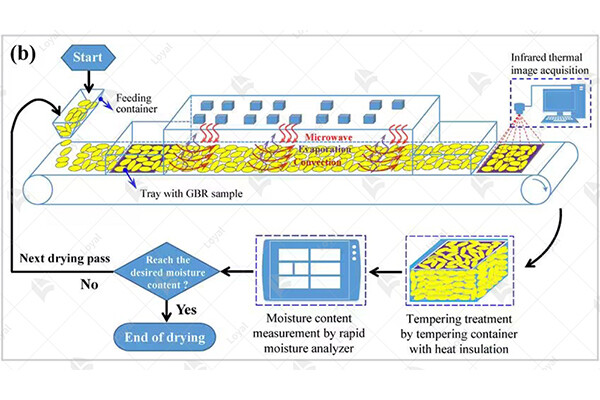
Types of Microwave Drying and Sterilization Equipment
Microwave technology has revolutionized the food industry, particularly in the realm of drying and sterilizing equipment. In the context of industrial tunnel microwave fish feed pet dog food sterilizing dryer, there are several types of equipment commonly used for these purposes.
1. Batch Microwave Dryers:
Batch microwave dryers are versatile and widely used in various food processing applications. They are suitable for smaller production volumes and offer flexibility in processing different types of food products. In the case of fish feed and pet dog food sterilization, batch microwave dryers can efficiently remove moisture and sterilize the products in controlled batches.
2. Continuous Microwave Tunnel Dryers:
Continuous microwave tunnel dryers are designed for high-volume production lines, offering a continuous and automated drying process. These dryers feature a tunnel-like structure through which the food products pass on a conveyor belt, ensuring uniform drying and sterilization. In the context of industrial tunnel microwave fish feed pet dog food sterilizing dryer, continuous tunnel dryers are ideal for large-scale operations, providing consistent results with minimal manual intervention.
3. Hybrid Microwave-Infrared Dryers:
Hybrid microwave-infrared dryers combine the advantages of both microwave and infrared technologies to achieve optimal drying and sterilization results. These dryers utilize microwave energy for rapid heating and moisture removal, supplemented by infrared radiation for additional control and uniformity. In applications such as sterilizing fish feed and pet dog food, hybrid dryers offer enhanced efficiency and precision, ensuring product safety and quality.
4. Vacuum Microwave Dryers:
Vacuum microwave dryers are particularly effective for drying heat-sensitive food products while minimizing nutrient loss and preserving product quality. By operating under reduced pressure, these dryers lower the boiling point of water, facilitating faster evaporation and drying. In the context of industrial tunnel microwave fish feed pet dog food sterilizing dryer, vacuum microwave dryers can efficiently remove moisture and sterilize the products at lower temperatures, preserving their nutritional value and sensory attributes.
5. Fluidized Bed Microwave Dryers:
Fluidized bed microwave dryers utilize a fluidized bed of hot air or inert gas to suspend and agitate the food products, enhancing heat and mass transfer for efficient drying. When combined with microwave energy, these dryers achieve rapid and uniform drying while preventing product degradation. In applications such as sterilizing fish feed and pet dog food, fluidized bed microwave dryers offer precise control over drying parameters, ensuring optimal product quality and safety.
Each type of microwave drying and sterilization equipment offers unique advantages and capabilities, catering to different production requirements and product characteristics. By understanding the characteristics and functionalities of these equipment types, manufacturers can select the most suitable solution for their specific applications, ensuring efficient and high-quality processing of fish feed and pet dog food products in industrial settings.
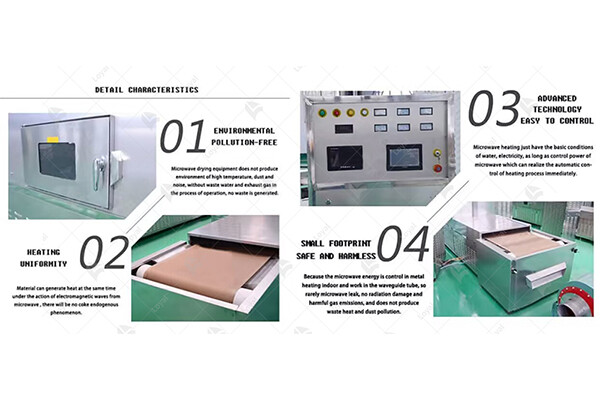
Technological Progress and Innovation of Microwave Drying and Sterilization Equipment
In the realm of industrial food processing, the evolution of drying and sterilization equipment has been marked by significant technological advancements. With the advent of industrial tunnel microwave fish feed pet dog food sterilizing dryer, manufacturers are witnessing a new era of efficiency and effectiveness in food processing.
Microwave Technology Integration:
One of the most notable innovations in drying and sterilization equipment is the integration of microwave technology. Industrial tunnel microwave fish feed pet dog food sterilizing dryers leverage the power of microwaves to rapidly and uniformly heat food products, ensuring thorough drying and sterilization. This technology not only expedites the processing time but also preserves the nutritional integrity and flavor profile of the food items.
Automation and Control Systems:
Another crucial aspect of technological progress in microwave drying and sterilization equipment is the implementation of advanced automation and control systems. These systems enable precise monitoring and adjustment of processing parameters such as temperature, humidity, and airflow, ensuring optimal drying and sterilization conditions. Furthermore, automated processes reduce the reliance on manual labor, enhancing operational efficiency and consistency.
Enhanced Safety Features:
In response to stringent food safety regulations, manufacturers of industrial tunnel microwave fish feed pet dog food sterilizing dryers have incorporated enhanced safety features into their equipment. These features include real-time monitoring of sterilization processes, automatic shutdown mechanisms in case of abnormalities, and robust insulation to minimize heat loss and ensure operator safety.
Energy Efficiency and Sustainability:
Technological innovation in microwave drying and sterilization equipment also encompasses improvements in energy efficiency and sustainability. Modern dryers are designed to minimize energy consumption by utilizing advanced heating and cooling mechanisms, as well as optimizing process parameters for maximum efficiency. Additionally, manufacturers are increasingly adopting eco-friendly materials and practices to reduce environmental impact and promote sustainability in food processing operations.
In summary, the technological progress and innovation in microwave drying and sterilization equipment have revolutionized the food processing industry, enabling faster, safer, and more efficient production of a wide range of food products, including industrial tunnel microwave fish feed pet dog food sterilizing dryer. As advancements continue to drive the evolution of this equipment, we can expect even greater improvements in performance, reliability, and sustainability in the years to come.
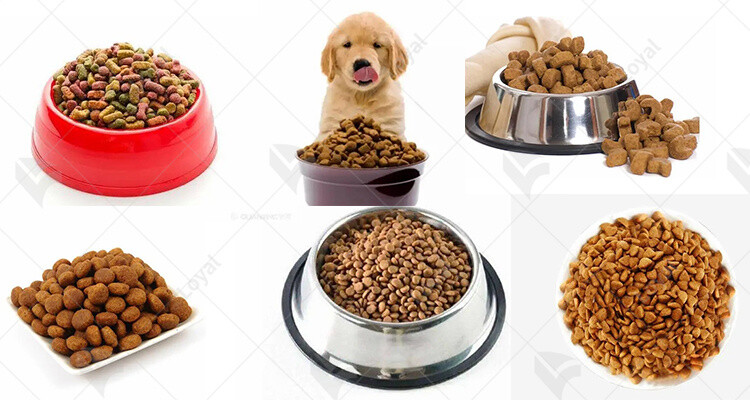
Precautions for the Selection and Implementation of Microwave Drying and Sterilization Equipment
Selecting and implementing industrial tunnel microwave fish feed pet dog food sterilizing dryer equipment requires careful consideration and adherence to certain precautions. As an expert in industrial food machinery, it's imperative to ensure that the chosen equipment meets the specific needs and standards of the operation. Here are some key precautions to keep in mind:
1. Assessing Equipment Suitability: Prior to selecting a microwave drying and sterilizing dryer, it's essential to assess its suitability for the intended application. This involves evaluating factors such as capacity, power requirements, drying efficiency, and sterilization effectiveness. The industrial tunnel microwave fish feed pet dog food sterilizing dryer should be capable of handling the volume and type of food products with precision and consistency.
2. Quality and Reliability: Opting for equipment from reputable manufacturers ensures quality and reliability. Conduct thorough research to identify trusted suppliers known for producing high-performance industrial tunnel microwave fish feed pet dog food sterilizing dryers. Quality equipment not only delivers superior results but also minimizes the risk of downtime and maintenance issues, thus optimizing production efficiency.
3. Compliance with Standards: Compliance with industry standards and regulations is non-negotiable when selecting microwave drying and sterilization equipment. Ensure that the chosen equipment adheres to relevant safety and sanitation standards, including those set forth by regulatory bodies such as the Food and Drug Administration (FDA) and the European Food Safety Authority (EFSA). Compliance ensures the production of safe and hygienic food products.
4. Operator Training and Support: Adequate operator training is paramount for the successful implementation of microwave drying and sterilization equipment. Manufacturers should provide comprehensive training programs to equip operators with the necessary knowledge and skills to operate the equipment safely and efficiently. Additionally, opt for suppliers that offer ongoing technical support and maintenance services to address any operational issues promptly.
5. Integration with Existing Systems: Before integrating industrial tunnel microwave fish feed pet dog food sterilizing dryer equipment into existing production systems, assess compatibility and ensure seamless integration. Consult with experts to evaluate the layout and workflow of the facility, considering factors such as space availability, electrical requirements, and logistical considerations. Proper integration minimizes disruptions to production processes and maximizes operational efficiency.
By adhering to these precautions, industrial food machinery experts can effectively select and implement microwave drying and sterilization equipment, ensuring optimal performance and compliance with industry standards.
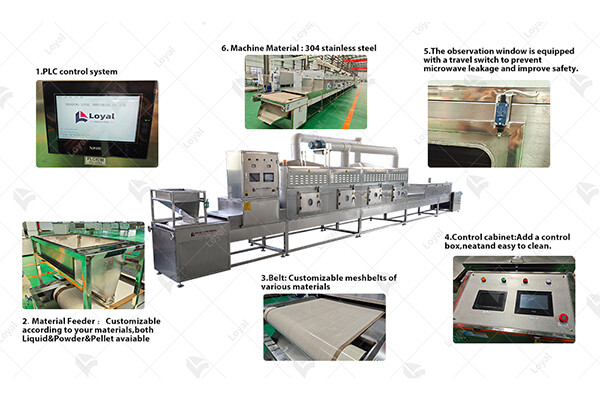
Post-Maintenance of Microwave Drying and Sterilization Equipment
Proper post-maintenance of industrial tunnel microwave fish feed pet dog food sterilizing dryers is essential to ensure optimal performance and longevity of the equipment. After regular use, it's imperative to conduct thorough inspections and maintenance procedures to address any potential issues and keep the equipment running smoothly.
1. Cleaning and Sanitization: One of the primary post-maintenance tasks is cleaning and sanitizing the equipment. This involves removing any residual food particles, grease, or other contaminants that may have accumulated during operation. Use appropriate cleaning agents and methods recommended by the equipment manufacturer to ensure effective cleaning without damaging sensitive components.
2. Inspection of Components: After cleaning, inspect all components of the microwave drying and sterilization equipment for signs of wear, damage, or malfunction. Pay close attention to the conveyor belt, heating elements, fans, seals, and control systems. Any abnormalities should be addressed promptly to prevent further damage and ensure safety during operation.
3. Lubrication and Calibration: Lubricate moving parts as necessary to reduce friction and prevent premature wear. Additionally, calibrate temperature and power settings to maintain optimal performance and energy efficiency. Follow the manufacturer's guidelines for lubrication intervals and calibration procedures to achieve consistent results.
4. Replacement of Consumable Parts: Certain parts of the equipment, such as filters, seals, and gaskets, may require periodic replacement to maintain effectiveness and prevent contamination. Keep an inventory of spare parts on hand and replace them according to the manufacturer's recommendations or as needed based on inspection results.
5. Functional Testing: After completing maintenance procedures, perform functional tests to ensure that the equipment operates correctly. Verify that all controls, sensors, and safety mechanisms function as intended. Conduct test runs with simulated loads to confirm proper heating and sterilization performance.
By following these post-maintenance procedures diligently, operators can prolong the service life of industrial tunnel microwave fish feed pet dog food sterilizing dryers and minimize downtime due to unexpected malfunctions. Regular maintenance not only preserves equipment integrity but also contributes to product quality and safety in food processing operations.
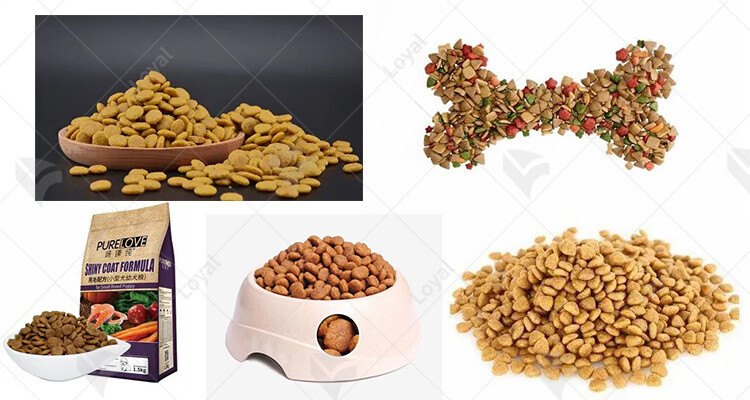
References
The following are five authoritative foreign literature websites in the field of industrial microwaves:
1. IEEE Xplore Digital Library
Website: [https://ieeexplore.ieee.org/]
2.ScienceDirect
Website: [https://www.sciencedirect.com/]
3. SpringerLink
Website: [https://link.springer.com/]
4. Wiley Online Library
Website: [https://onlinelibrary.wiley.com/]
5. PubMed
Website: [https://pubmed.ncbi.nlm.nih.gov/]
 Telephone :+86-531-55583139
Telephone :+86-531-55583139 WhatsApp :+86 13256674591
WhatsApp :+86 13256674591 Email :
Email :










